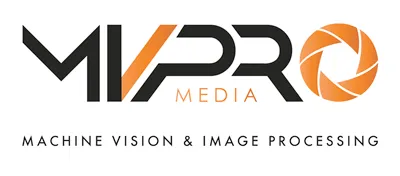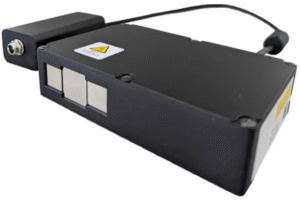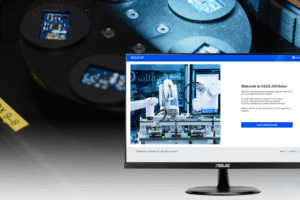When I think about the machine vision industry, I see it as a fascinating example of how innovation and consolidation constantly shape one another. Like any emerging market, machine vision began with entrepreneurs spotting opportunities to create entirely new products and services. Today we can see the same kind of wave happening with AI, but back in the 1970s and 1980s, machine vision was experiencing its own early growth.
In the late 1970s, research centres such as MIT became fertile ground for new ideas, spawning startups that would later grow into some of the industry’s most influential players. An early company to the party was JAI, founded in 1963 by Jørgen Andersen. Identifying an opportunity, in 1973, they developed one of the first industrial cameras, and Andersen kept the company in private hands until 2024. Before the surge of digital camera startups around 2000, JAI was one of the few large general-purpose machine vision camera companies, alongside SONY in Japan and PULNiX in the US (later acquired by JAI).

In 1976, another key name appeared: Matrox. They developed some of the earliest image acquisition cards and went on to become a major force in image processing hardware and software, remaining a core brand until Zebra acquired their machine vision business in 2022. Then, in 1980, DALSA was founded in Waterloo. They pushed the boundaries of high-performance and line-scan cameras and became one of the first to embrace a “buy and build” strategy, which accelerated after Teledyne acquired them in 2011. Over time, Teledyne DALSA absorbed Coreco, Imaging Technology, Lumenera, Point Grey (through Flir), and Photometrix. Many of those management teams remain active under Teledyne DALSA, showing how consolidation can preserve knowledge and an innovative culture while building scale.
Among the early pioneers, one company still stands independent: Cognex. Founded in 1981 by an MIT lecturer in human perception, Cognex remains publicly traded and continues to lead its field.
Because machine vision has always been a relatively small industry, much of its innovation has come from adapting mainstream IT technologies. When Apple launched FireWire (IEEE-1394) in the mid-1990s, it created the first real chance to eliminate the costly frame grabber. This breakthrough sparked new companies such as Point Grey in Canada and Allied Vision Technologies in Germany, while also giving long-time manufacturers like Sony a fresh way to expand. Later, USB 2.0 and Gigabit Ethernet became mainstream in the early 2000s, fueling another round of growth. IDS and Lumenera built reputations on USB2, while JAI, DALSA, and Basler helped pioneer the GigE Vision standard, making machine vision closer to plug-and-play.
Once USB and Ethernet became dominant, product lines converged, and differentiation became harder. The move from CCD to CMOS sensors accelerated this. With CCD, support electronics were crucial to image quality, giving camera makers room to innovate. With CMOS, the sensor itself did much of the work, reducing design complexity and lowering costs. This shift brought a flood of new players offering basic, cheaper products. Yet cameras never truly became commodities—reliability, supply longevity, and extra features still separate the leaders from the rest. DALSA and SVS-Vistek, for example, integrated advanced features that improved traceability, reduced camera count, and enhanced robustness. Meanwhile, Point Grey and Allied Vision focused on compact form factors, speed to market, and affordability. Both strategies found their place, and today Point Grey and DALSA sit under Teledyne while Allied Vision and SVS-Vistek are siblings under TKH Vision.
Despite the crowded landscape, new entrants have found room through innovation. When Flir acquired Point Grey in 2016, former employees launched two notable startups. Emergent Vision Technologies focused on ultra-high-speed connectivity, moving from 10GigE to 100GigE and dominating high-performance multi-camera applications. Lucid Vision Labs pursued flexible form factors, IP-rated designs, time-of-flight cameras, SWIR, and event-based vision. Both show that creativity still opens doors, even in mature markets.
Opportunities are not always technical. In 1997, Basler, then a manufacturer of inspection systems, relied on DALSA’s line-scan cameras for CD/DVD inspection. DALSA was focused on large, high-performance cameras for semiconductors, but Basler needed smaller models. When DALSA declined to create a compact camera, Basler built its own—creating a new competitor. Today Basler is one of the world’s leading camera companies, alongside DALSA. This story shows how not recognising a market opportunity can create a rival.
Differentiation has also come from business approach. SONY once held a dominant share of standard machine vision cameras, but their consumer electronics mindset caused issues: each new generation camera replaced the old instantly. For OEM machine builders, this was disruptive, forcing reintegration mid-lifecycle. By contrast, DALSA, Allied Vision, and JAI kept older models in production as long as viable, often supporting three generations at once. This strategy shifted power toward more OEM-focused suppliers. I later heard from a manufacturer that their best-selling cameras were previous-generation models, still in demand because they were integrated into long-lived OEM systems. Factories quietly produced thousands of them while newer models got the headlines.
Software has followed a similar path of consolidation and innovation. Zebra acquired Matrox’s MIL and Adaptive Vision, building a wider ecosystem. MVTec, on the other hand, has remained proudly independent, continuing to lead with its HALCON and MERLIC platforms.
The rise of deep learning has been the most recent wave of software innovation. Swiss-based Vidi was among the first to combine algorithms with an easy-to-use training suite. Cognex acquired them in 2019, and today nearly every vision software provider offers a deep learning solution. Yet ease of use, accuracy, and long-term stability vary widely. While training may appear simple, implementations can fail without expertise, often due to limited training data. To address this, startups like Medabsy and Zeta Motion are generating synthetic training images or offering slick tools and services that lower barriers to entry.
Looking at the bigger picture, I see machine vision as an industry of niches, each with specific demands. This creates strong opportunities for both innovation and consolidation. By bringing together complementary players in cameras, optics, and lighting, holding companies can gain efficiencies. The key, though, is preserving the entrepreneurial spirit within these niches. Groups like Exaktera, TKH Vision, and Excelitas exemplify this, acquiring founder-led firms as their original entrepreneurs retire.
In summary, I believe the machine vision market will continue to move forward through both innovation and consolidation. Any company with a clearly unique proposition has the chance to thrive, especially with the sector’s strong growth potential. At the same time, larger players will keep seeking acquisitions to expand their capabilities and take market share. For me, this balance between creativity and scale is what makes the industry so dynamic and rewarding to follow.

















